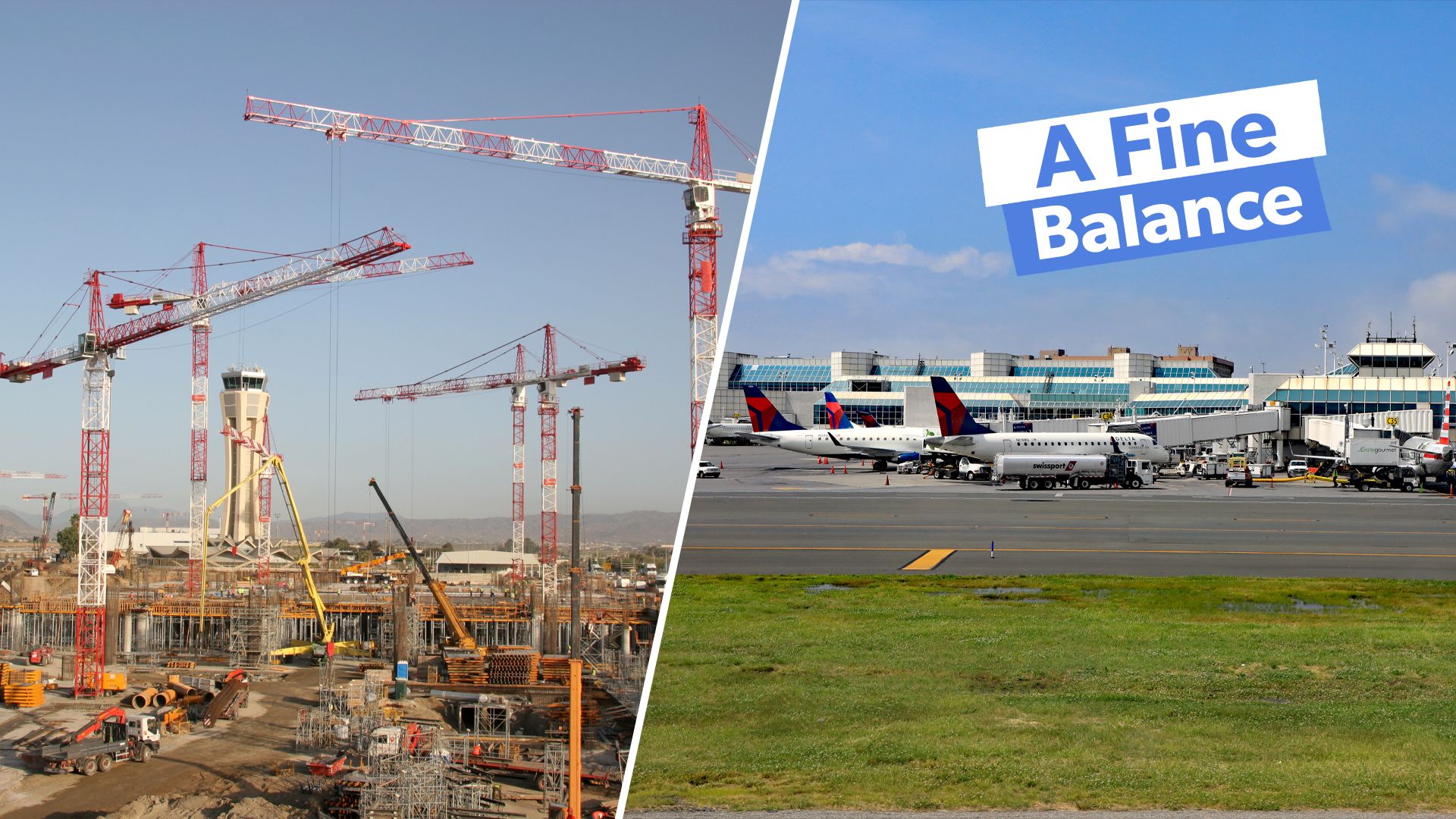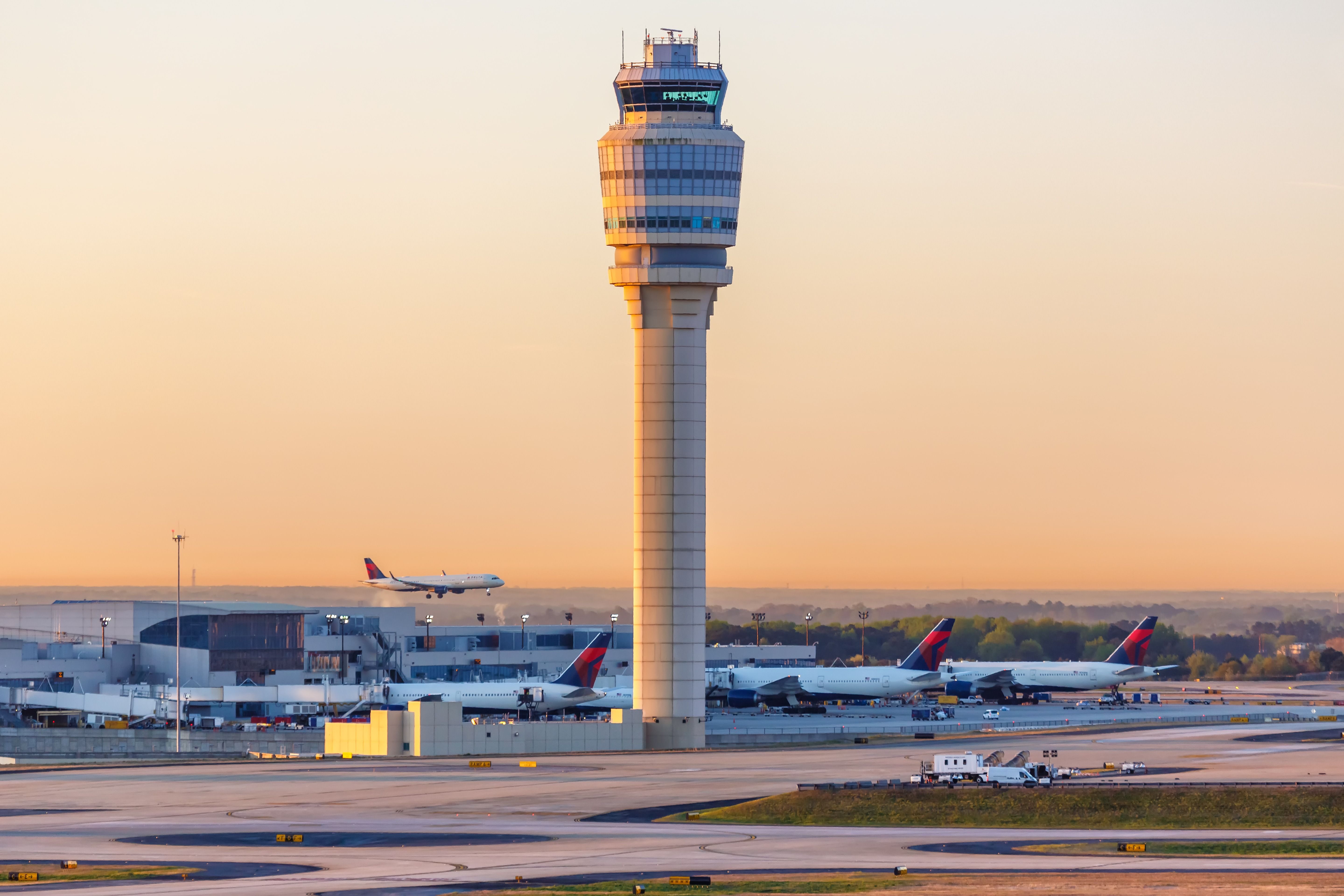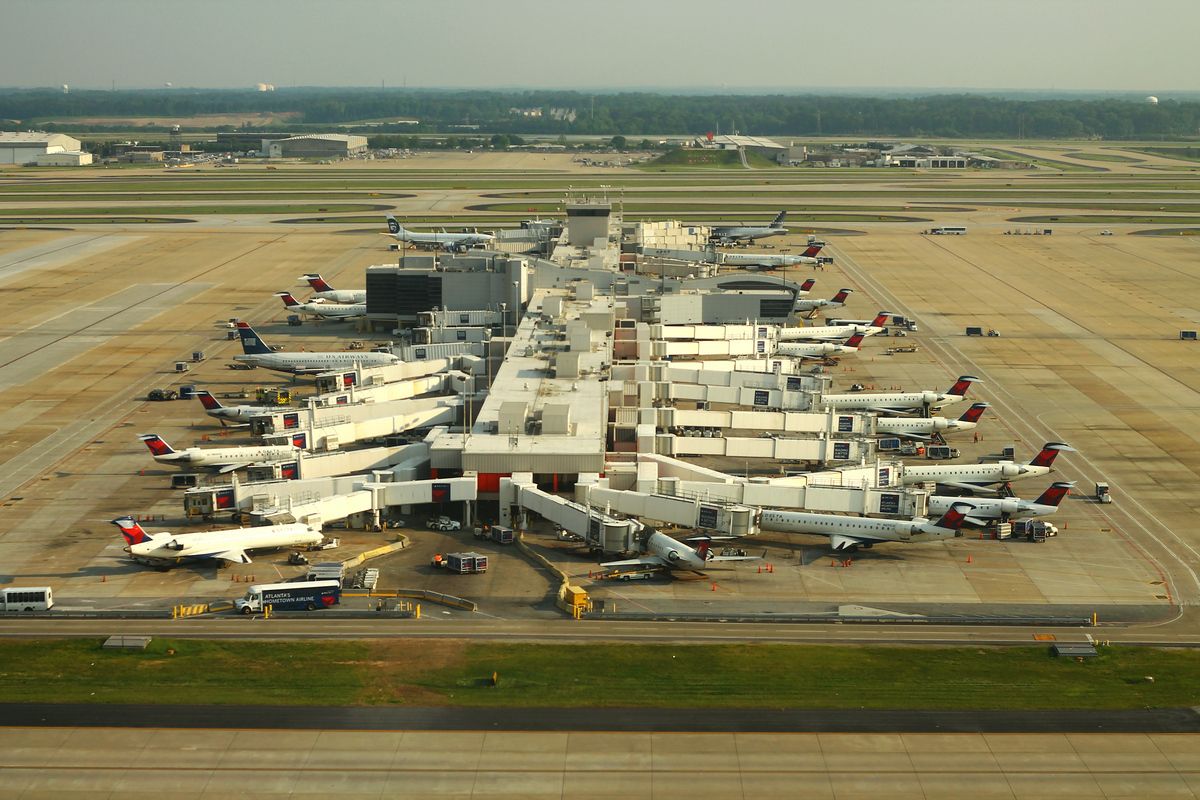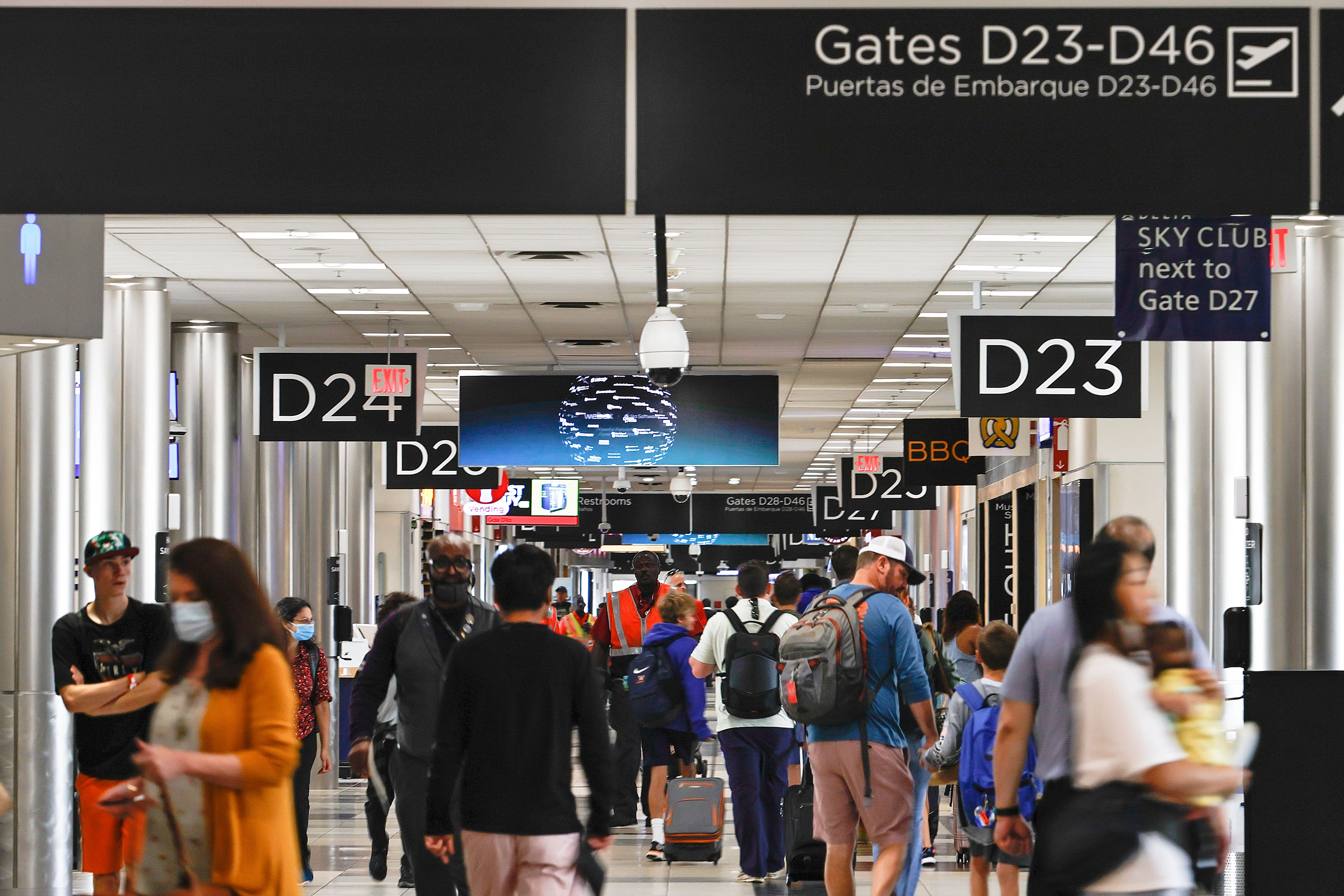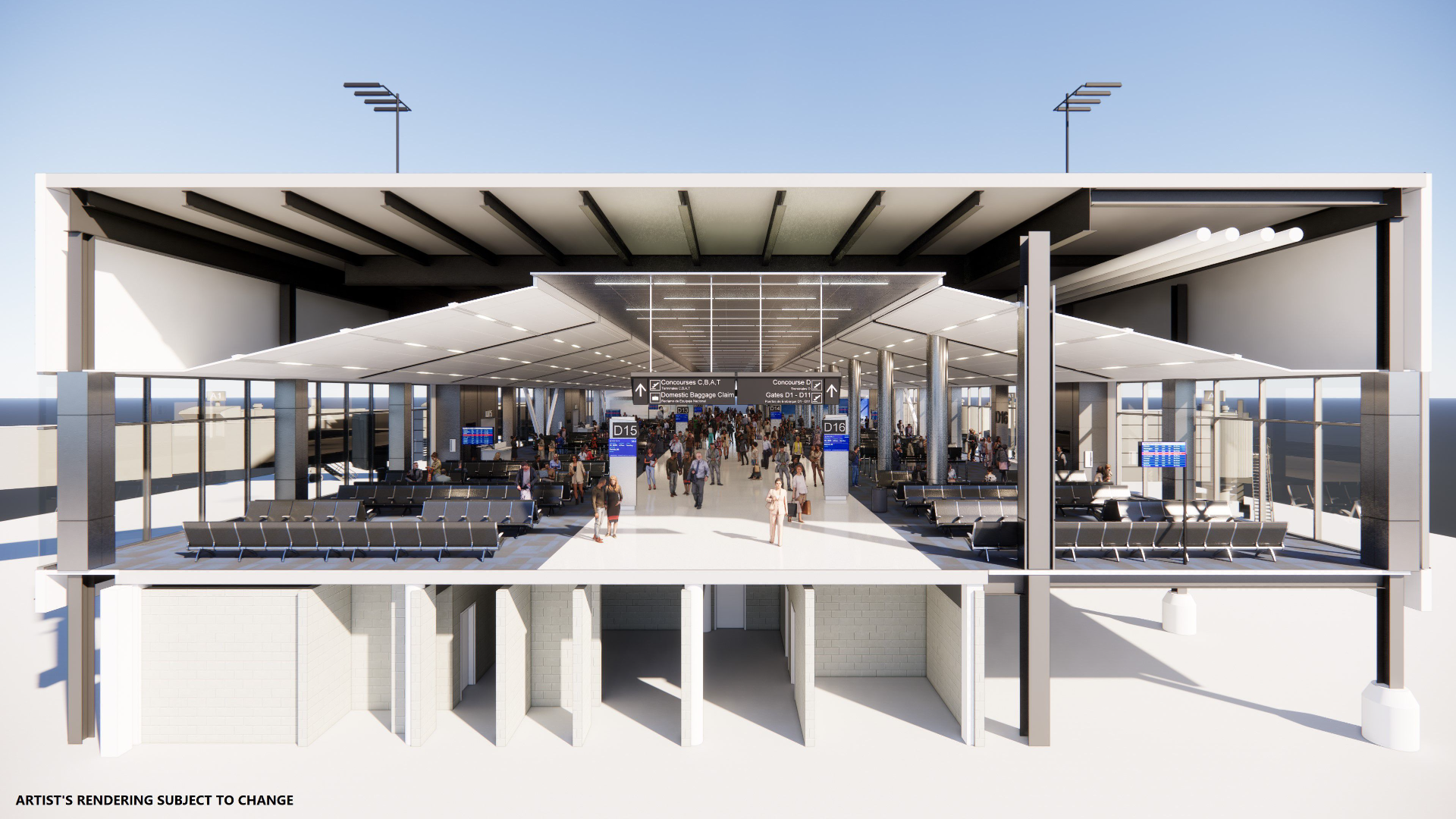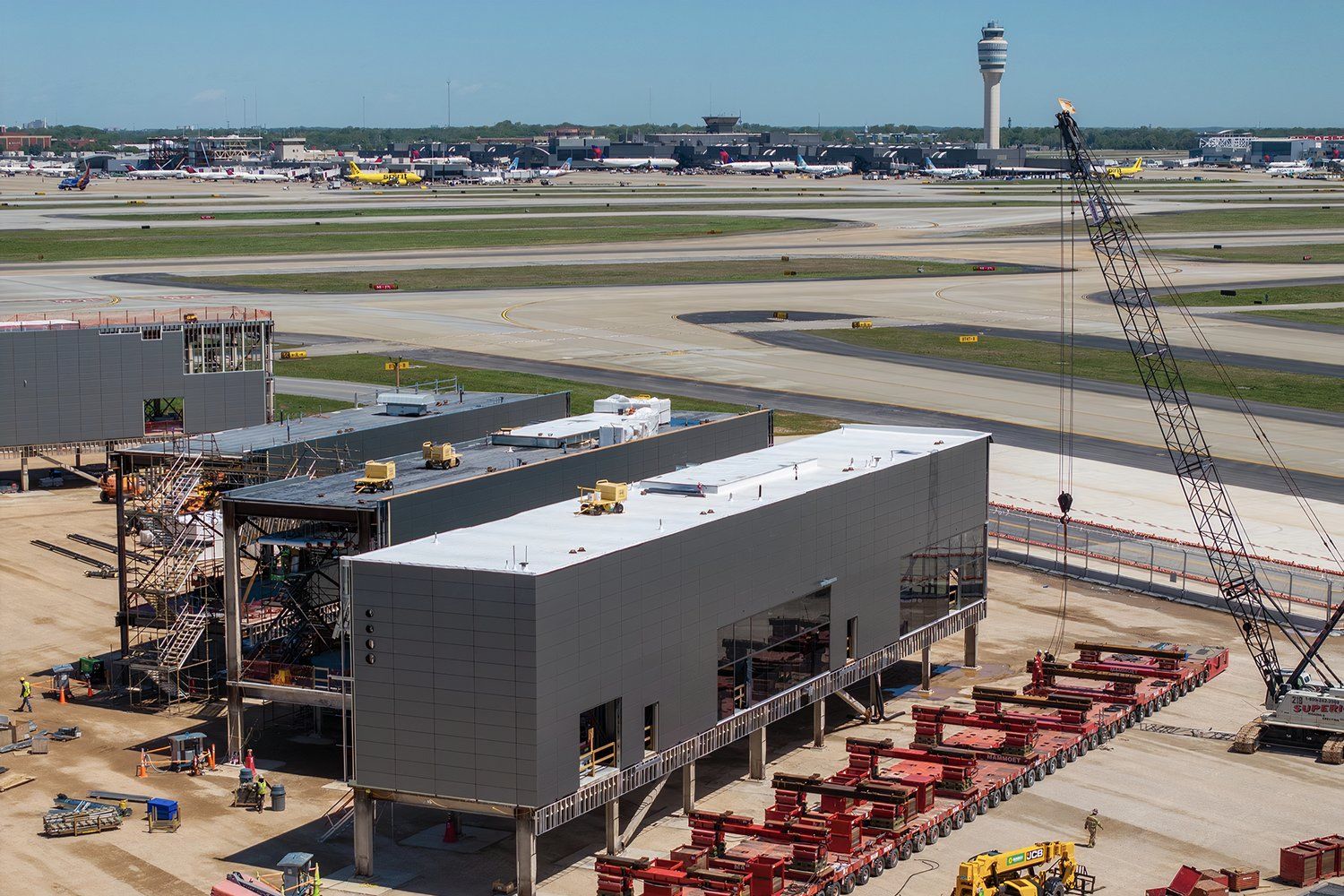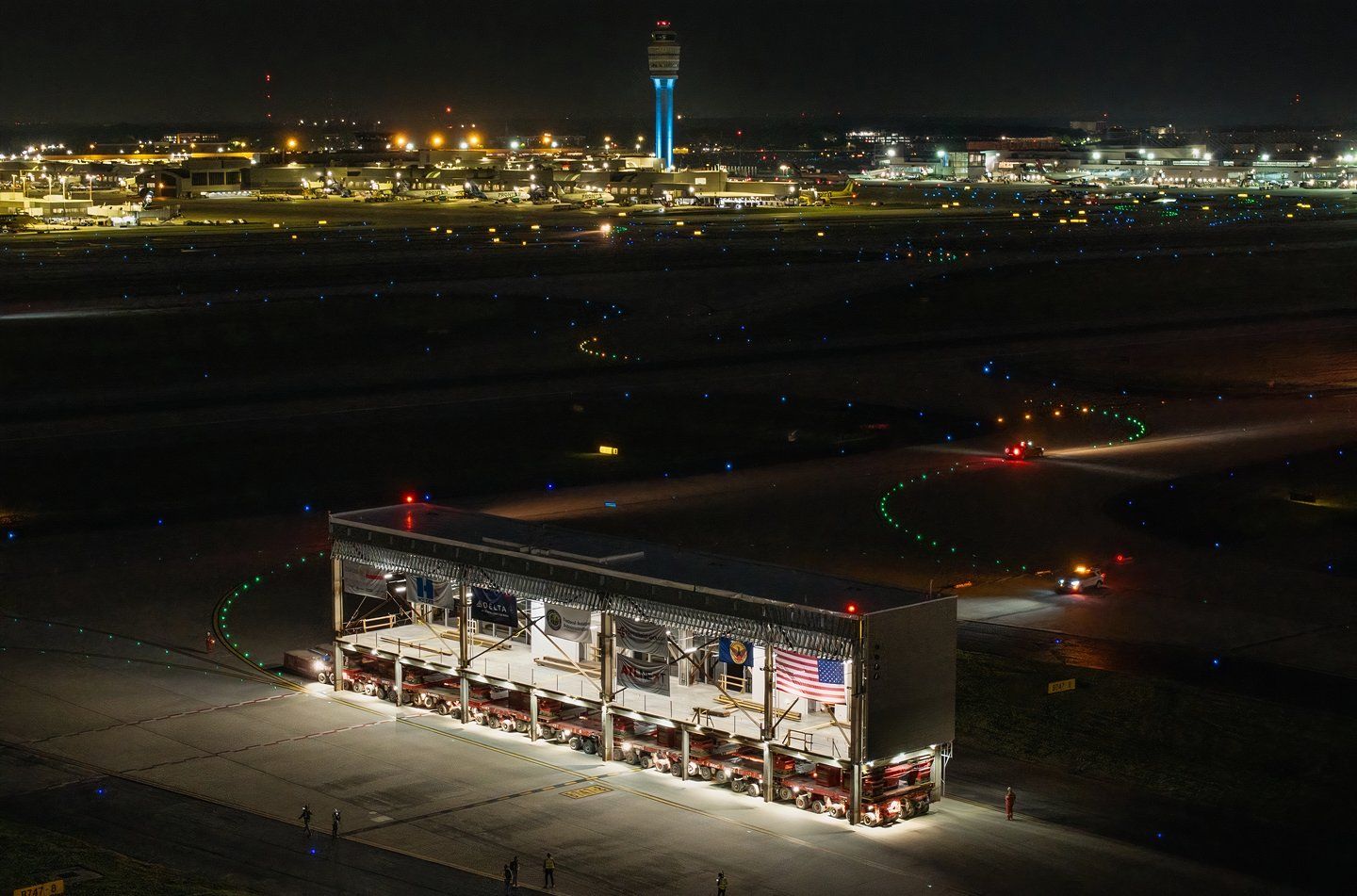Summary
- Concourse D at ATL is being upgraded to accommodate larger, modern aircraft.
- The $1.4 billion renovation uses modular construction while maintaining flight schedules.
- The first set of expanded gates is operational, with completion expected by 2029.
Atlanta Hartsfield-Jackson International Airport (ATL) is the world’s busiest airport, with 105 million passengers passing through its gates in 2023, or nearly 300,000 per day on average. To handle this massive volume of traffic, ATL has five runways and seven separate concourses, all connected by 24/7 ‘Plane Train’. The larger concourses have well over 30 gates each, but the challenge is that many of them were constructed decades ago as Atlanta geared up for the 1996 Olympics, and the needs of the flying public have changed significantly since then.
Photo: Markus Mainka | Shutterstock
Concourse D gets an F
Nowhere is that more apparent than with Concourse D, a 44-year-old building that, at just 60 feet wide, is by far the narrowest of ATL’s concourses. Its original purpose was to service Delta Air Lines’ regional aircraft that connected smaller cities and towns across the southeast to its ATL hub. But that need has changed significantly as Delta withdraws the CRJs from its operations, and increasingly needs to use the gates for its Airbus A220, A320 family, and Boeing 737 family fleets.
Photo: ATLNext
This has led to cramped walkways with small gate areas that get jam-packed during busy periods. Frank Rucker, Hartsfield-Jackson’s senior deputy general manager of infrastructure, is the first to admit it:
“Concourse D can get really congested at the best of times. It is far from ideal. If I had to rate the level of service there, it would probably be close to an F.”
Photo: Atlanta Hartsfield Jackson International Airport
The concourse gets a $1.4 billion upgrade
This prompted the airport and Delta officials to collaborate to develop a $1.4 billion plan to widen the concourse. The plan is part of the ATLNext Capital Improvement Program, which includes renovations to multiple concourses, a complete overhaul of the parking decks at ATL, upgrades to the taxiway and runway infrastructure, and ultimately a sixth runway. The net results of the Concourse D upgrades will be widening it from 60 feet to 99 feet and extending its overall length by 288 feet.
Photo: ATLNext
But the world’s busiest airport can’t afford to lose a whole concourse to demolition and rebuilding, so the plan called for the renovation to happen while the concourse continued to operate regular flight schedules.
To achieve this, the decision was made to build modular parts of the new concourse just over a mile across the airfield, just north of the fifth runway, and move them into place over time. The genius of this modular approach is that a maximum of 6-8 of the 39 gates at Concourse D are closed at any given time throughout the project, so it remains almost fully operational throughout.
Photo: WSP
How the modular construction works
Architectural planning for the project started in 2022, along with the creation of the construction yard and provision of utilities. By January of this year, construction of the first modules began while work on the foundation and utility relocation needs of the concourse began simultaneously. In total, 19 modules will be constructed, each approximately 30 feet wide by 170 feet long and taking a few months to complete. Each is designed to fit into frames on either side of the existing concourse structure, coming together like a large jigsaw puzzle.
The next stage is the transportation of the modules to the concourse, which itself is a feat of engineering that has never been seen before at a large airport:
- Modules are only moved within a three-hour window from 1 to 4 a.m. when the airport is at its quietest.
- Each module is slowly lifted by giant, self-propelled modular transporters at the modular yard.
- The airside operations team then coordinates with the tower to get the green light to start moving.
- Once started, the journey of just over a mile to Concourse D takes about 45 minutes to complete, and the module crosses two runways.
- Arriving at the concourse, the module is lined up with prebuilt frames and put in place. Positioning is extremely precise, with tolerance levels of less than 1/16th of an inch.
- Work then begins on integrating the new module with the existing structure.
Photo: WSP
As Todd McClendon from ATLNext explains:
“No one else has done what we are doing – a project of this scale, combining modular and traditional stick-build construction while keeping a massive concourse operational. We’ve had to design something that can roll on wheels, so there’s been a lot of structural design to allow us to do that. It’s not traditional, for sure. This is a game changer.”
So how’s it going?
Construction of the first modules was completed just four months after work began, and they were moved across the airfield and put in place in April. However, there was still much work to be done, as the modules had to be physically joined to the existing structure. As the modules are only ‘warehouse ready,’ teams have been working for the past few months on fixtures, ceilings, lighting, plumbing, and flooring to get passenger-ready.
The first six gates of the new expansion were officially opened to the traveling public in early September, right on schedule. The gates were handed over to Delta in the morning, with flights departing by the afternoon. Now the airline is able to cater for much larger domestic aircraft such as Delta’s A321neos and B737-900s from these gates.
But there was no time for the construction team to relax, as the next set of eight gates was closed the following day, and preparation work began for the next set of modules to arrive. Construction and transportation of those is expected to be completed in January 2026, and the entire project is set to conclude by the summer of 2029.

